Leveraging Normative Data for Talent Development in Men’s Football
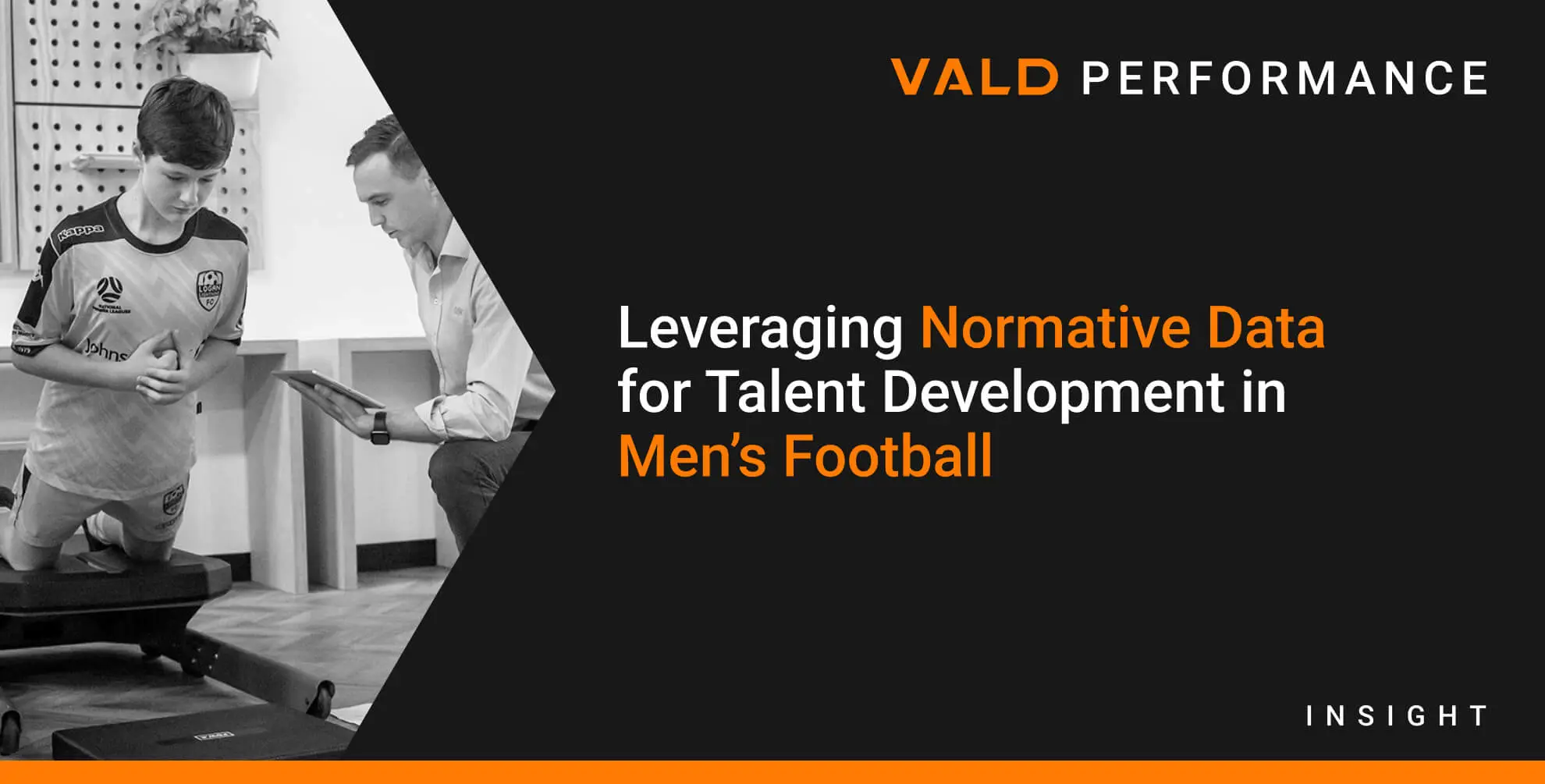
Talent identification in youth athletes has long been one of the holy grails of professional football, with coaches and teams investing heavily in finding future superstars from around the world. Historically, football clubs have faced challenges in how to obtain and how to make sense of physical capacity testing data of youth athletes. These include:
- Relying heavily on data collected from elite adult players to ‘reverse engineer’ benchmarks for academy players – resulting in inaccurate criteria and potentially late or misidentification of prospective talent;
- Inaccurate and/or non-specific testing tools that provided potentially flawed data; and
- Infrequent testing (most commonly once per year) – resulting in potential missed opportunities given the rapid physiological changes that occur in adolescence.
However, with the advent of accurate and easy-to-use objective measurement tools and the rich longitudinal data they enable, teams are becoming significantly more sophisticated in collecting data and gleaning insights to assist in identifying talent. VALD have a long history of working with the world’s leading professional football teams, including all 20 Premier League teams and hundreds of top-flight teams and leagues worldwide. Over this time, our clients have helped us build an unrivalled repository of normative data from over 83,000 male football players from around the world.
our clients also have helped us build an unrivalled repository of normative data from over 83,000 male football players from around the world.
Our mission is also to achieve this level of data with female footballers. We have been collecting data in female sports for a number of years and this year we also launched our mission to accelerate this.
Historically, VALD has generated seasonal reports on hamstring strength, hip adduction and abduction strength and counter movement jump (CMJ) performance – among other data – for English and European Footballers. More recently, we investigated normative data on hip abduction/adduction strength, jump height (CMJ) and Nordic hamstring strength on youth academy footballers. VALD clients also have access to normative data reports across a range of age populations to use within their organizations.
In this article, VALD’s team of Data Scientists share some insights into where we’re taking normative data in the future, by examining some of the stories that data tells about adolescent and long-term athletic development trends in professional footballers.
Becoming stronger during adolescence
Examining the strength development of male athletes in football academies and professional clubs, we observe unsurprisingly steep gains during the teenage years, typically peaking in the early twenties. The charts below show normative data of athletes in academy or professional football programs (ages 13 – 35) for Counter Movement Jump (CMJ) on ForceDecks. Four common results from the CMJ test are shown:
- Concentric Peak Force (N);
- Jump Height (Imp-Mom, cm);
- Peak Power (W); and
- RSI Modified (m/s).
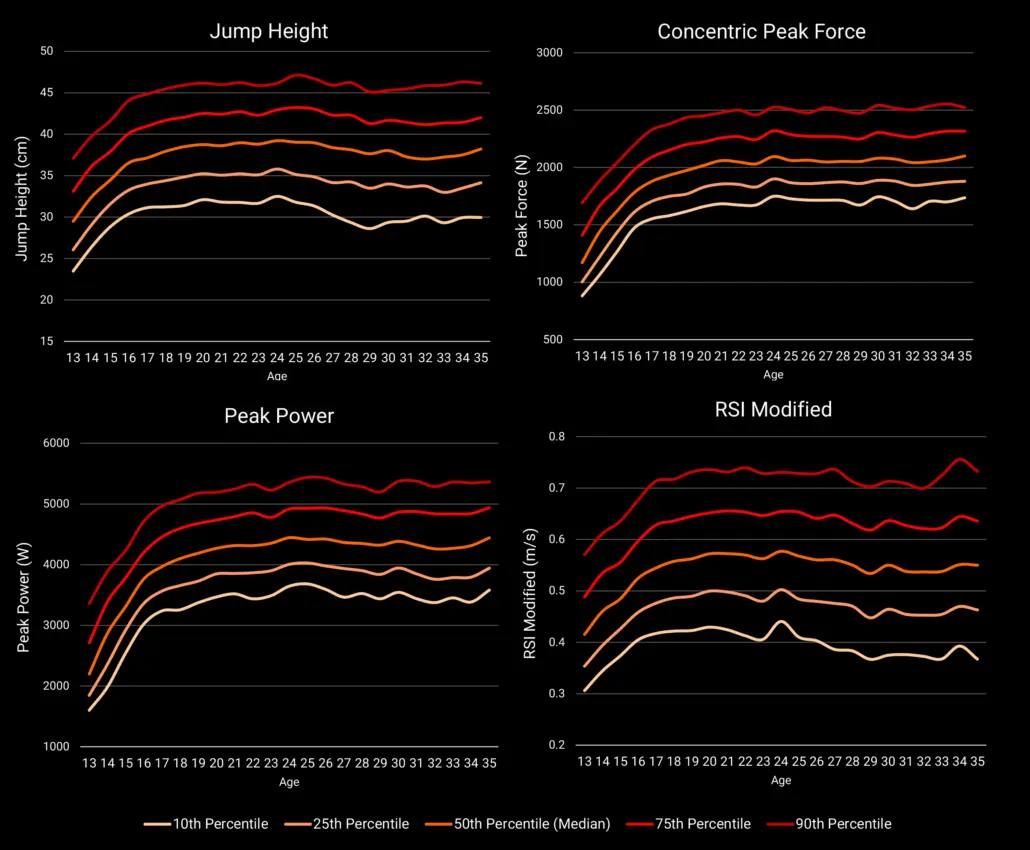
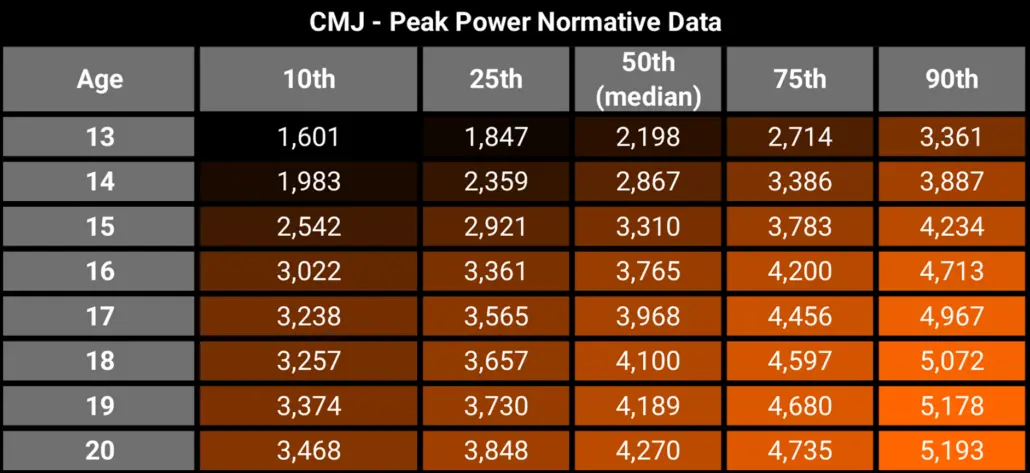
Through a raw strength lens, we see a similar – albeit not identical – pattern in athletes’ Peak Vertical Force generation in the Isometric Mid-Thigh Pull (IMTP) test.
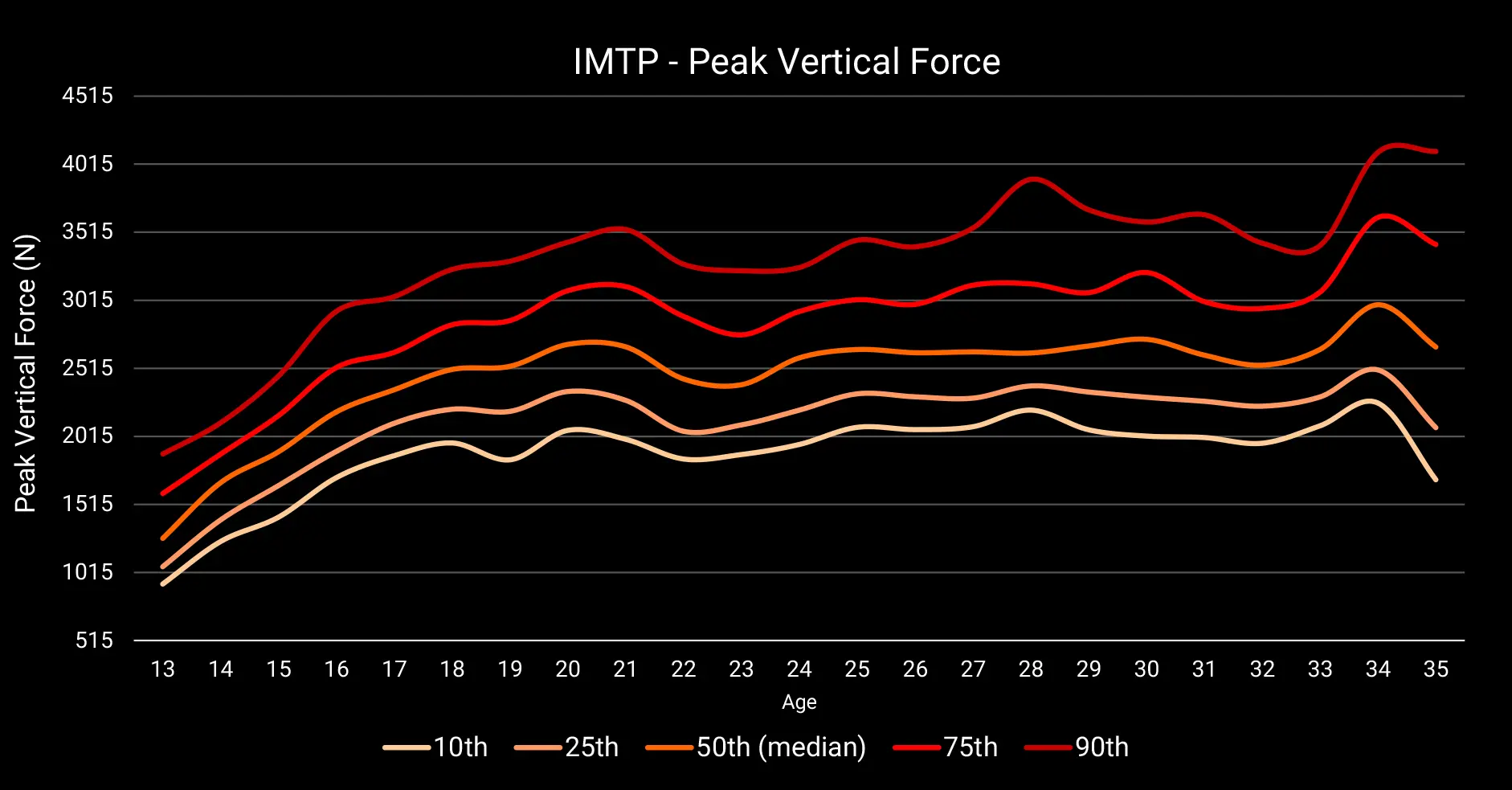
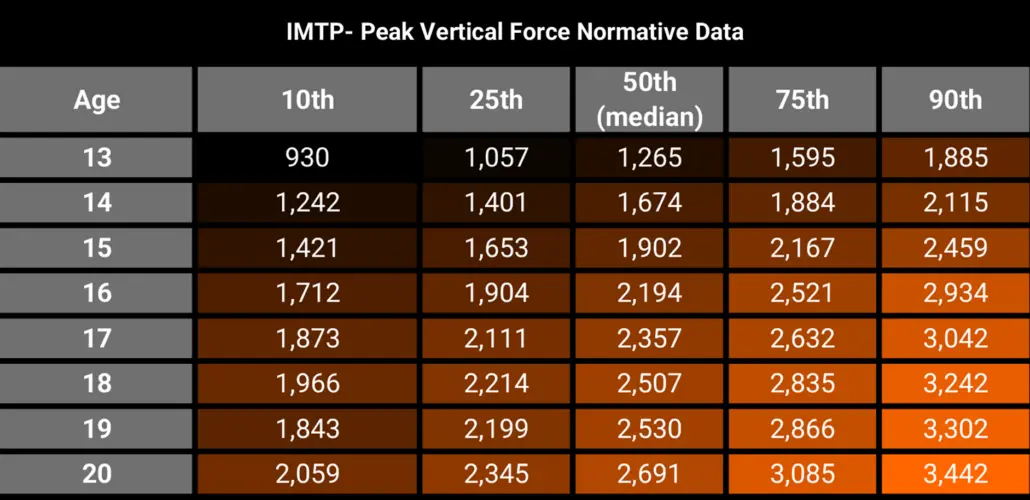
How rapidly does strength and power develop?
Our data show that the Peak Power on a CMJ of an average 13-year-old male increases as much every 4 weeks as the average adult male decreases in a year.
In a CMJ, the average 13-year-old male’s Peak Power increases as much every 4 weeks as the average adult male’s decreases in a year.
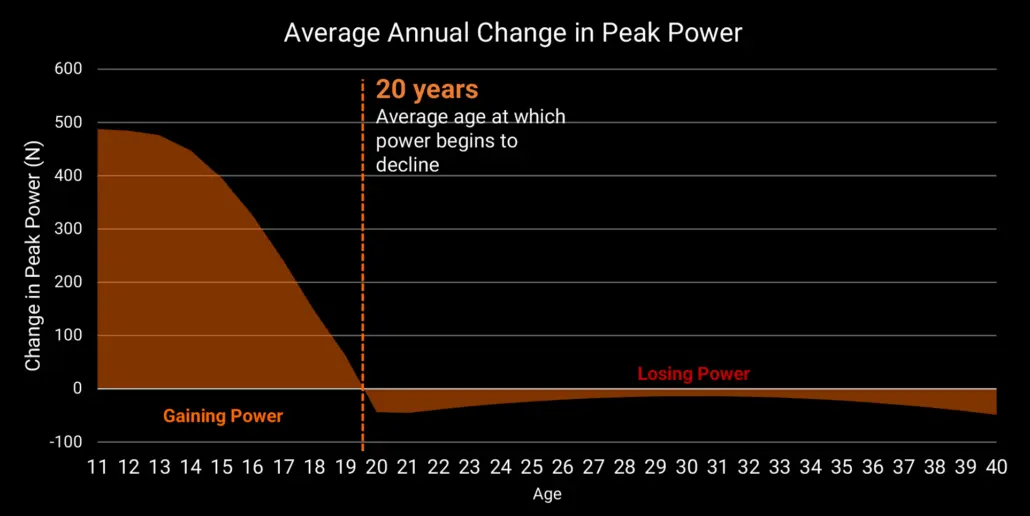
Monitoring for “Rapid Developers”
Our data reinforces the common understanding that adolescents develop at different rates, and we are able to demonstrate the magnitude and fluctuations of development by tracking cohorts over time.
As an example, we isolated the bottom half of 14-15 year old males at football academies, based on their best test result in the first month they were tested.
- After 3 months: 22% of these athletes had moved to the top half of the cohort.
- After 12 months: 39% of had moved to the top half of the cohort, including 16% who are in the top quartile.
This shows us that – at least for physical performance – without regular testing, many eventual high performers could easily be prematurely dismissed as low performers.
This shows us that – at least for physical performance – without regular testing, many eventual high performers could easily be prematurely dismissed as low performers.
By embracing regular testing and closely evaluating athletes’ progress, teams can identify rapid improvers early and make strategic investments in their development.
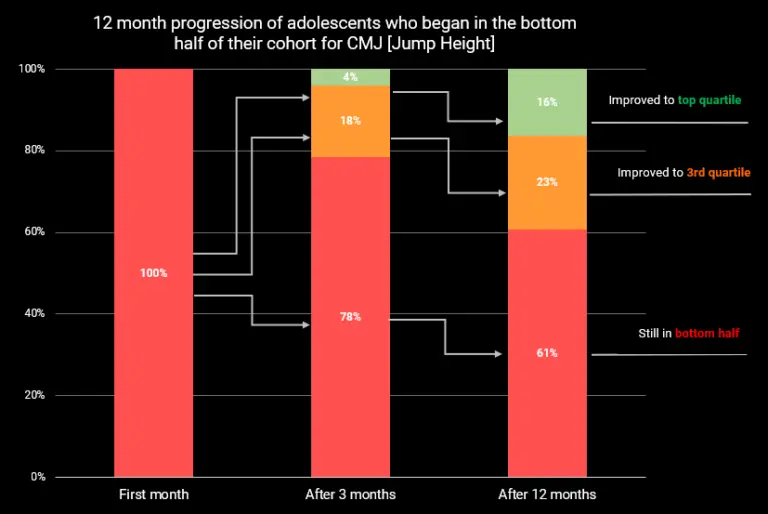
Maintaining strength after reaching physical peak
What happens after players reach their physical peak? In average, non-elite adults, CMJ Jump Height (Imp-mom, cm) decreases by 1.3% per year between the ages of 22 and 35.
Conversely, for professional football players, Jump Height remains relatively consistent – demonstrating that elite athletes are typically able to maintain (or, perhaps, must maintain) their peak physical strength and power throughout their entire career. Put simply, a 35-year-old athlete may need to be just as strong and powerful as their 22-year-old peer (or themselves), despite biology fighting against them.
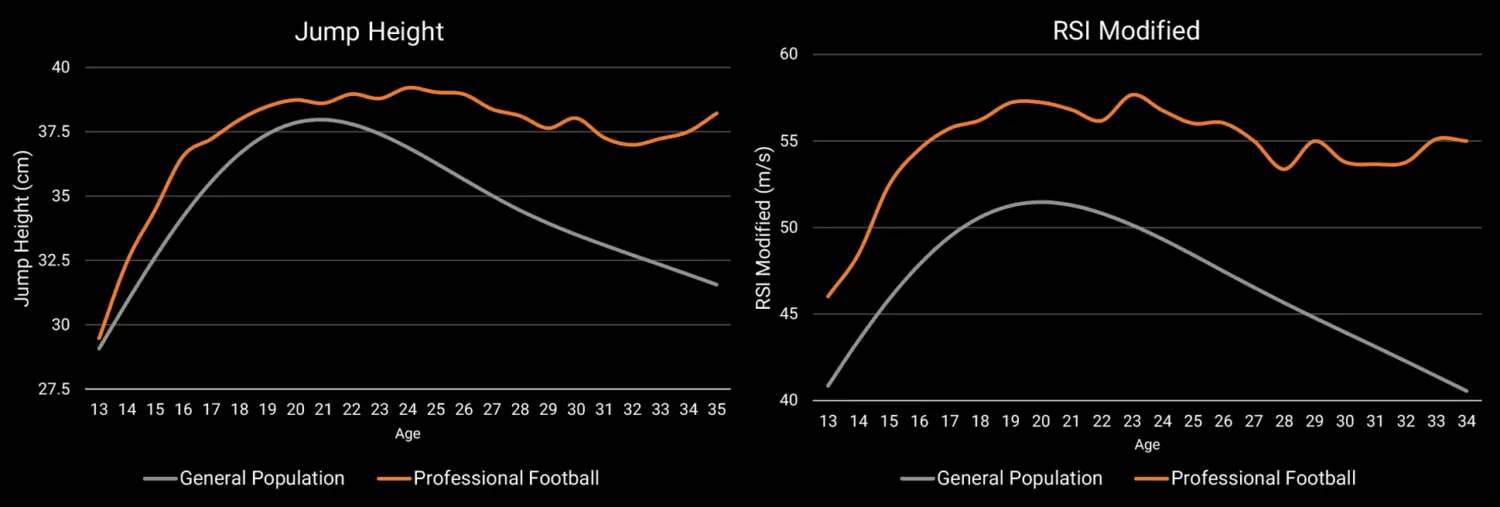
There are three key takeaways we can derive from this data:
- Benchmark normative data for elite football programs;
- Rapid youth development occurs, peaking in early 20’s; and
- The requirements to maintain elite physical attributes throughout a player’s career.
A look into the future
What makes this revolution in hyper-specific normative data even more exciting is that most organizations are still in the early stages of utilizing it to enhance talent identification and athlete development.
Since the start of VALD’s journey, we’ve worked closely with elite and developmental football teams around the world. We have seen many of our clients continue to innovate, leveraging the power of data to come up with new, creative solutions for age-old problems in elite sport.
We are excited and determined to continue to work with the football industry into the future, building on the normative data we’ve generated together and delivering greater and greater insights over time.
If you would like to know more about how to integrate VALD’s human measurement technology into your organization to help with the engagement of your clients, please reach out here.
